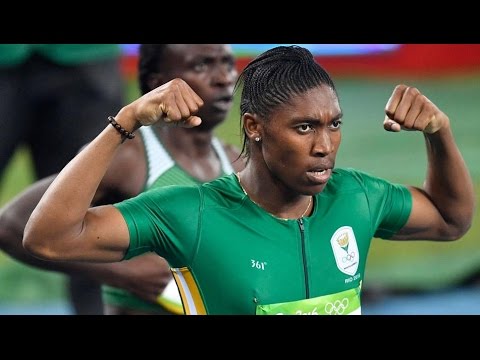This is the behind-the-scenes story of the South African #1 undisputed middle-distance runner of 2016 and Olympic gold medalist in Rio de Janeiro, Caster Semanya. It shows a totally different and fascinating slice of life in South Africa from that of the white underclass, which I broadcast recently.
It touches on a touchy subject made touchier by the polarizing politics of our day.
Semanya was raised and socialized as a girl but she has three times the normal levels of testosterone in her body than that of a typical female. She became a South African sports heroine after winning the 2009 Berlin International Association of Athletics Federations (IAAF) race.
Due to spikes in her run times and her arguably male appearance, she was forced to have invasive medical exams to verify her gender and although her medical results were never officially released, leaks came out about an “intersex trait”. She was banned from competing in 2010. At the time, Semanya says on-camera here, “I was born this way…Are you going to blame me or are you going to blame God?”
Later examinations overturned that ruling and she was allowed to compete again. She went on to win gold in many races, including in the 2012 London Olympics and again, in the 2016 Rio Olympics.
Some argue that her best running times are seconds off from the fastest females on record; she is not the fastest female, ever – but still, it is exactly the “freaks of nature”, such as herself and eight-time Jamaican Olympic Champion, Usain Bolt who are born to run.
The film is actually more about the gray nature of gender, an issue that has been inflaming politics, lately.
The scientist interviewed here says that gender is a spectrum and that scientifically, there is no such thing a person who is 100% male or female. The argument remains however, whether intersex athletes should be allowed to compete in women’s athletics?
Some woman athletes argue that it’s been hard enough to develop women’s sports programs to now have to contend with this. They don’t feel that it’s right that intersex and transgender athletes should be allowed to compete in women’s sports.
Where does this leave intersex and transgender athletes, who would neither be able to compete with men nor women?
Maria José Martínez-Patiño is also shown here. She was a former hurdler on the Spanish Olympic team, who was stripped of her gold medal and forced to step down in 1986, in a very humiliating and public way. She was born, raised and developed with all of the outward the appearances of a female and only discovered in her early 20s that she was an XY female with Complete Androgen Insensitivity Syndrome (CAIS).
Many “males” born with this condition develop almost “super-female” bodies, often with cinched waists, large breasts and masses of shiny head hair. Although genetically male, the testosterone receptor sites of CAIS women do not absorb the testosterone running in their blood into their tissues, making them in some ways more “female” than most XX females, who do have functioning testosterone receptors.
Virtually all CAIS women do not even know that they are XY until they fail to begin menses at puberty, to then have medical examinations revealing that their “ovaries” are actually undescended testicles. It is common for young women with low body fat, especially competitive runners to have their menses stop or to never even commence, while they remain extremely active, athletically. The female body requires a certain ratio of body fat in order to be fertile. This may be why Patiño could have easily ascribed her lack menses to her elite athletic career.

